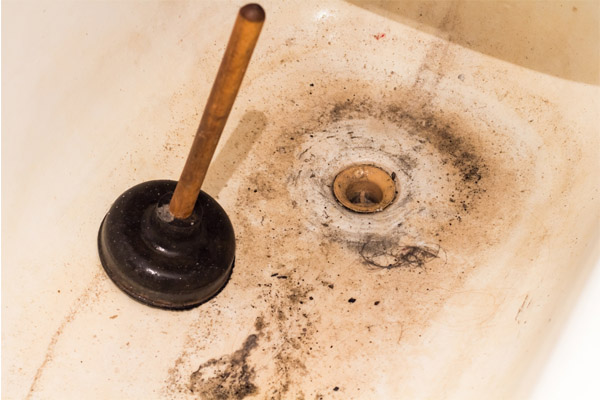Significant Explanations for Drainage in the Bathtub
Significant Explanations for Drainage in the Bathtub
Blog Article
The publisher is making a few good pointers regarding Why is Sewage Backing Up Into My Bathtub? as a whole in this article followed below.

Sewer backup in the bath tub can be a traumatic and unsanitary issue for any type of home owner. Not only is it inconvenient, however it likewise positions serious health risks and shows underlying issues with the plumbing system. Understanding why sewer is showing up with the bath tub is critical for taking ideal activity to resolve the problem efficiently.
Intro to the Issue
Common Factors for Sewer Back-up
Clogs in the Drain Line
One of one of the most typical reasons for sewer back-up is a clog in the sewage system line. This can happen due to the buildup of debris, grease, or international items in the pipelines, preventing appropriate flow and causing sewage to back up right into your tub.
Tree Root Invasion
Tree origins seeking moisture and nutrients can penetrate sewage system lines with tiny cracks or joints. Over time, these roots can grow and expand, creating significant damage to the pipes and leading to sewage back-up issues.
Comprehending the Problem
When sewage draws back up into the tub, it's a clear sign of a problem with the drainage system. The wastewater that ought to be streaming away from your home is rather discovering its back into your living space, which can lead to significant damages and health hazards.
Potential Reasons
Several variables can contribute to sewer back-up in the bathtub. From obstructions in the sewage system line to concerns with the plumbing framework, identifying the origin is essential for discovering a solution.
Aging Framework
Older homes may have outdated plumbing systems that are a lot more at risk to deterioration, splits, and deterioration. As pipelines age, they come to be extra susceptible to leaks and clogs, boosting the probability of sewer backup incidents.
Heavy Rainfall or Flooding
Throughout periods of heavy rainfall or flooding, the sewer system might become overwhelmed with excess water, triggering back-ups and overflows. This can lead to sewage supporting into bathtubs and various other fixtures inside the home.
Signs of Sewage Back-up
Foul Odors
Unpleasant odors rising from drains or fixtures, specifically in the washroom, may suggest sewer back-up concerns. These smells are usually solid and consistent, signifying a problem that requires immediate attention.
Slow Draining Fixtures
Bath tubs, sinks, and commodes that drain pipes slowly or not in all could be experiencing sewer backup. If numerous components are affected concurrently, it's most likely that the problem stems from an usual point, such as the primary drain line.
Gurgling Sounds
Odd gurgling or bubbling noises originating from drains when water is running in other places in your house are a sign of air entraped in the plumbing system. This air buildup can arise from sewer back-up and should be investigated without delay.
Health And Wellness Threats Associated with Sewer Backup
Contamination of Water Supply
Sewage backup can pollute the water in your home, presenting a major health threat to you and your family members. Direct exposure to infected water can bring about gastrointestinal concerns, skin infections, and other ailments.
Mold and mildew Growth
Dampness from sewage back-up can create perfect problems for mold growth in your house. Mold and mildew spores can worsen respiratory issues and cause allergies in sensitive individuals, making punctual cleaning vital.
Spread of Condition
Sewage has harmful germs, infections, and parasites that can cause a variety of conditions, consisting of liver disease, cholera, and gastroenteritis. Entering into contact with sewer or infected surfaces puts you at risk of infection.
Cleaning Up After Sewage Back-up
Disinfection Procedures
Thoroughly disinfect and sterilize influenced locations after sewage backup to remove damaging germs and stop mold and mildew development. Usage proper cleaning products and safety equipment to make sure safe and efficient cleaning.
Repair of Influenced Areas
Repair any type of damage to flooring, walls, or fixtures triggered by sewer back-up. Depending upon the level of the damage, you may need to change carpeting, drywall, or various other products to restore your home to its pre-loss problem.
Immediate Actions to Take
Shutting Off Supply Of Water
In case of sewer backup, it's necessary to switch off the water to stop additional contamination and damages. Find the main water shutoff valve in your house and shut it off till the issue can be fixed.
Speaking To a Specialist Plumber
Managing sewer backup is not a DIY task. Contact an accredited plumber with experience in dealing with sewage-related problems to analyze the scenario and execute necessary repair services or cleanups.
Avoiding Contact with Infected Water
Until the sewer backup is resolved, avoid contact with contaminated water to stop the spread of microorganisms and virus. Put on protective gear if you have to be in the afflicted area and clean your hands completely later.
Safety nets
Regular Upkeep of Sewer Lines
Set up routine inspections and upkeep of your sewer lines to identify and attend to prospective issues prior to they rise into significant problems. This can consist of cleaning debris, examining for tree root breach, and fixing any kind of damaged pipelines.
Installing Bayou Valves
Take into consideration mounting bayou shutoffs in your plumbing system to prevent sewage from receding into your home throughout durations of heavy rainfall or flooding. These shutoffs immediately close when water starts backing up, safeguarding your home from contamination.
Correct Disposal of Family Waste
Prevent purging anything other than toilet paper and human waste down the toilet to avoid obstructions and obstructions in the drain line. Dispose of oil, oil, and various other household chemicals appropriately to lessen the threat of plumbing problems.
Sewage Coming Up Through the Bathtub?
Understanding the Plumbing System:
To understand why sewage is coming up through your bathtub, it is essential to have a basic understanding of the plumbing system. The plumbing system is a complex network of pipes, valves, fixtures, and drains that work together to provide clean water to your home and remove waste and sewage. The system consists of two parts: the supply system and the drainage system.
The supply system brings clean water to your home, while the drainage system removes wastewater from your sinks, toilets, showers, and bathtubs. The drainage system is connected to the main sewer line, which carries the wastewater to the municipal sewage treatment plant or septic tank.
Causes of Sewage Coming Up Through the Bathtub:
Sewage coming up through the bathtub can be caused by various factors. Some of the most common causes are:
Clogged Drain Pipes:
One of the most common reasons for sewage coming up through the bathtub is a clogged drain pipe. Over time, debris, hair, soap scum, and other foreign objects can accumulate in the drain pipes, leading to a blockage. This can cause the wastewater to back up and come out of the bathtub.
Main Sewer Line Blockage:
Another reason for sewage coming up through the bathtub is a blockage in the main sewer line. The main sewer line connects your home’s drainage system to the municipal sewer system. If the main sewer line gets clogged due to tree roots, grease buildup, or other obstructions, it can cause sewage to back up into your home’s plumbing fixtures, including the bathtub.
Sewage Backup:
Sewage backup is another common cause of sewage coming up through the bathtub. Sewage backup occurs when there is a problem with the municipal sewer system, such as heavy rainfall, flooding, or a malfunctioning pump. When this happens, sewage can flow back into your home’s drainage system and cause sewage backup in your plumbing fixtures, including the bathtub.
Broken or Damaged Pipes:
Finally, broken or damaged pipes can also cause sewage to come up through the bathtub. Over time, pipes can deteriorate due to age, corrosion, or external factors such as shifting soil. When pipes break or crack, wastewater can leak out and cause sewage backup in your plumbing fixtures.
Signs of Sewage Coming Up Through the Bathtub:
Some of the signs that sewage is coming up through your bathtub include:
Foul odor: If you notice a strong, unpleasant odor coming from your bathtub drain, it could be a sign of sewage backup. The smell is caused by the buildup of organic waste in the pipes. Slow drainage: If your bathtub drains slowly or not at all, it could be a sign of a clogged drain pipe or a more severe problem with the main sewer line. Gurgling sounds: If you hear gurgling sounds coming from your bathtub drain or other plumbing fixtures, it could indicate that air is trapped in the pipes due to a blockage. Prevention Measures:
The best way to prevent sewage from coming up through the bathtub is to take preventative measures. Here are some practical tips:
Regular Drain Cleaning:
Regular drain cleaning can help prevent clogs and keep your pipes in good condition. You can use a plunger, drain snake, or enzymatic drain cleaner to remove any buildup of hair, soap scum, or other debris in your bathtub drain.
Proper Waste Disposal:
Improper waste disposal can also contribute to sewage backup. Avoid flushing non-biodegradable items, such as paper towels, feminine hygiene products, or wipes down the toilet. Also, be mindful of what you pour down the drain, such as grease, oil, or coffee grounds, as they can cause clogs.
Professional Plumbing Maintenance:
Regular plumbing maintenance can help prevent plumbing emergencies, such as sewage backup. A professional plumber can inspect your pipes, identify any potential issues, and perform preventative measures, such as hydro jetting, to clean your pipes.
Hydro Jetting:
Hydro jetting is a powerful method that uses high-pressure water to clean the pipes thoroughly. It can remove even the most stubborn clogs and prevent future blockages.

I am just very curious about Why is Sewage Backing Up Into My Bathtub? and I'm hoping you enjoyed reading the new entry. Enjoyed our write-up? Please quickly share it. Let others check it out. Thanks for your time spent reading it.
Call Today
Report this page